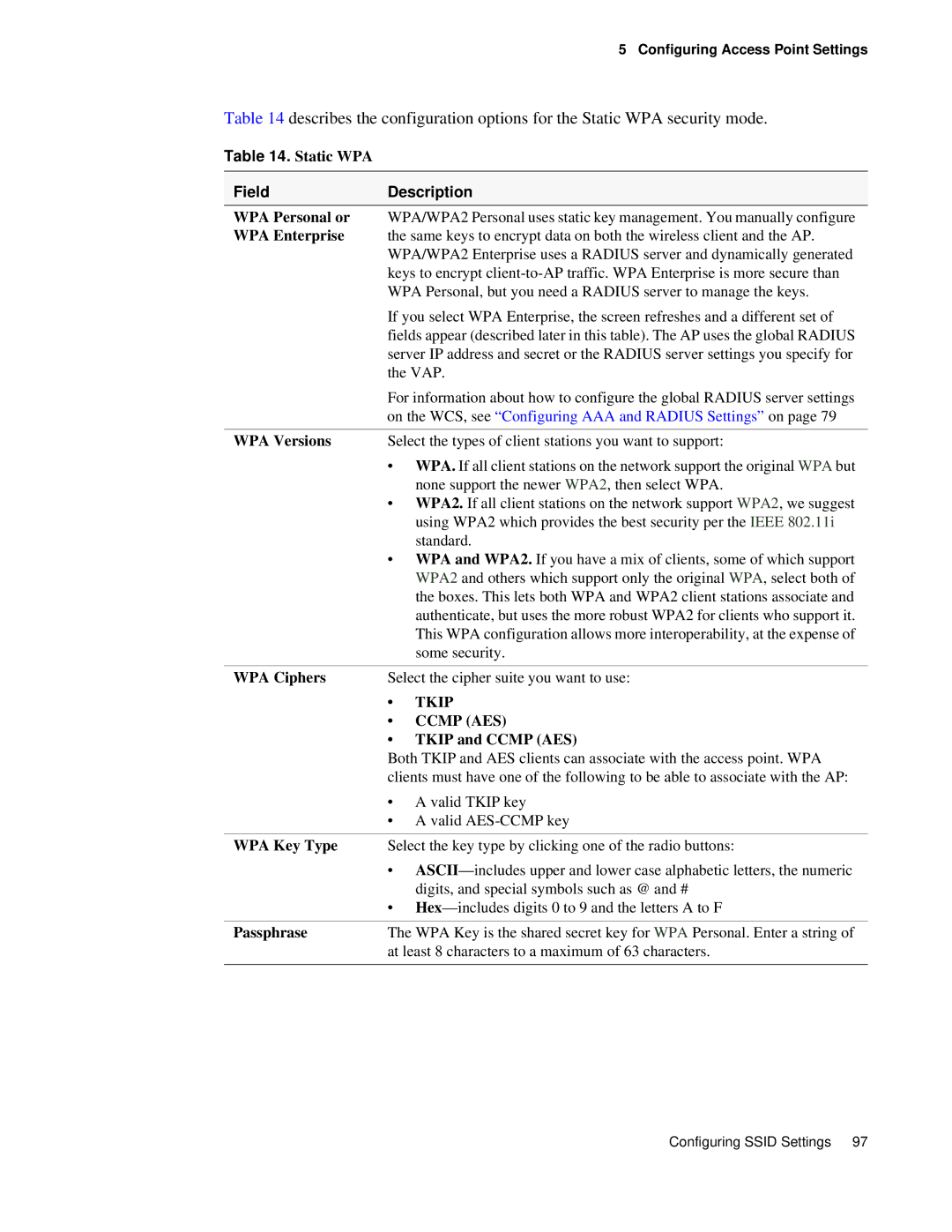5 Configuring Access Point Settings
Table 14 describes the configuration options for the Static WPA security mode.
Table 14. Static WPA
Field | Description | |
WPA Personal or | WPA/WPA2 Personal uses static key management. You manually configure | |
WPA Enterprise | the same keys to encrypt data on both the wireless client and the AP. | |
| WPA/WPA2 Enterprise uses a RADIUS server and dynamically generated | |
| keys to encrypt | |
| WPA Personal, but you need a RADIUS server to manage the keys. | |
| If you select WPA Enterprise, the screen refreshes and a different set of | |
| fields appear (described later in this table). The AP uses the global RADIUS | |
| server IP address and secret or the RADIUS server settings you specify for | |
| the VAP. | |
| For information about how to configure the global RADIUS server settings | |
| on the WCS, see “Configuring AAA and RADIUS Settings” on page 79 | |
|
| |
WPA Versions | Select the types of client stations you want to support: | |
| • WPA. If all client stations on the network support the original WPA but | |
|
| none support the newer WPA2, then select WPA. |
| • WPA2. If all client stations on the network support WPA2, we suggest | |
|
| using WPA2 which provides the best security per the IEEE 802.11i |
|
| standard. |
| • WPA and WPA2. If you have a mix of clients, some of which support | |
|
| WPA2 and others which support only the original WPA, select both of |
|
| the boxes. This lets both WPA and WPA2 client stations associate and |
|
| authenticate, but uses the more robust WPA2 for clients who support it. |
|
| This WPA configuration allows more interoperability, at the expense of |
|
| some security. |
|
| |
WPA Ciphers | Select the cipher suite you want to use: | |
| • | TKIP |
| • | CCMP (AES) |
| • TKIP and CCMP (AES) | |
| Both TKIP and AES clients can associate with the access point. WPA | |
| clients must have one of the following to be able to associate with the AP: | |
| • A valid TKIP key | |
| • A valid | |
|
| |
WPA Key Type | Select the key type by clicking one of the radio buttons: | |
| • | |
|
| digits, and special symbols such as @ and # |
| • | |
|
| |
Passphrase | The WPA Key is the shared secret key for WPA Personal. Enter a string of | |
| at least 8 characters to a maximum of 63 characters. | |
|
|
|
Configuring SSID Settings 97
